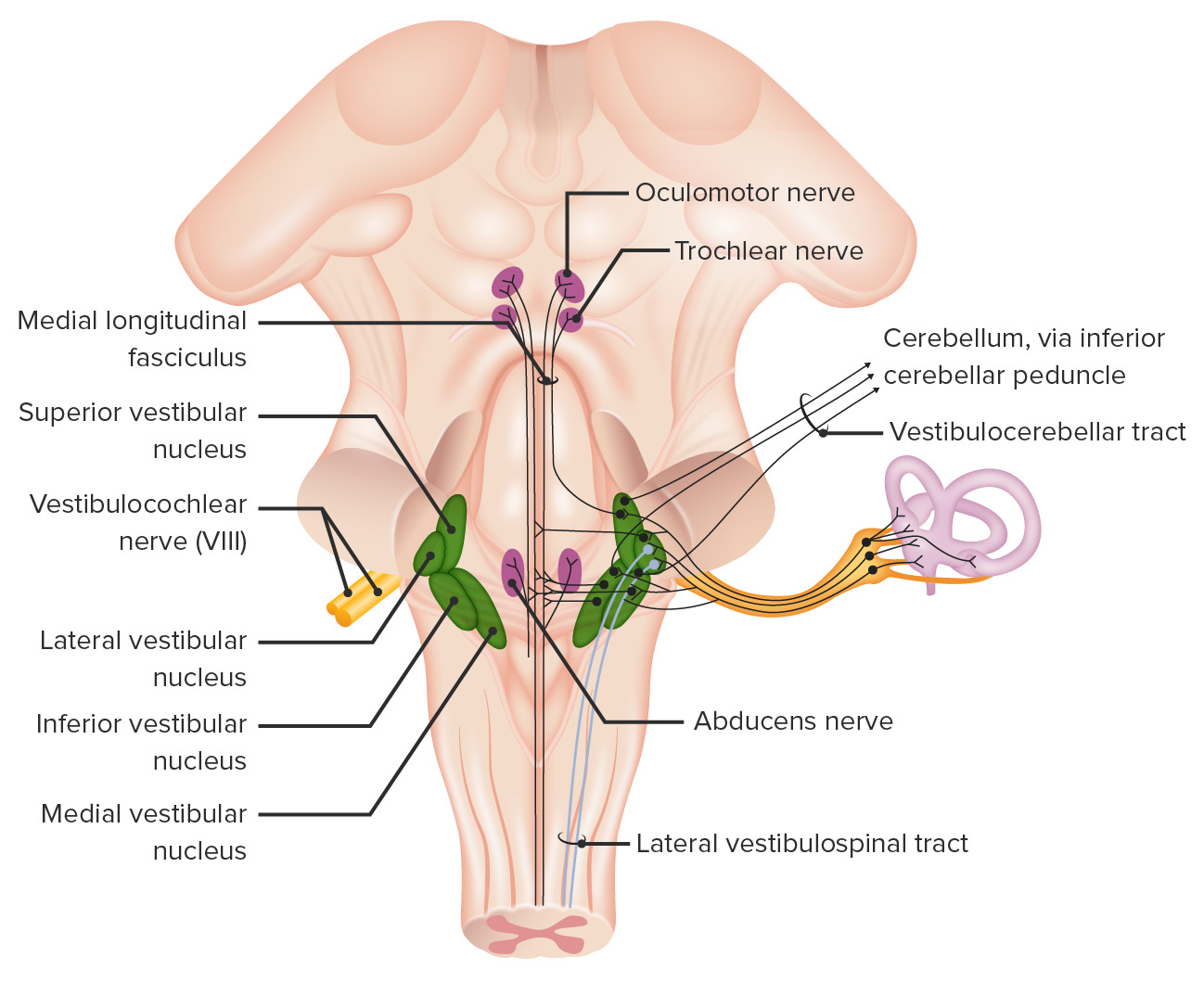Playlist
Show Playlist
Hide Playlist
Balance: Otolith Organs
-
Slides Nervous System-Hearing Balance.pdf
-
Download Lecture Overview
00:01 The Otolith Organs. 00:03 These also work on the structure of hair cells. Bending in one direction versus another. 00:10 These structural bent is all towards the kinocilium. 00:15 This is the tallest component of the hair cell. 00:19 So if you’re bending in that direction, you will get a depolarization. 00:23 If you bend in the opposite direction, you will get a hyperpolarization. 00:28 So how otolith organ works? Are you, are now putting these various lowcals of hair cells? All in a little different configuration. 00:40 So that in any movement that you get in the head or if there is linear acceleration that takes place. 00:46 Some of the hair cells will be bent depolarized, some will be bent and hyperpolarized. 00:53 It is this coordinated amount of information that’s sent back to the brain that helps it understand where it is in space. 01:04 So this otolith arrangement becomes very important. Which, which way you’re going to bend the hair cells. 01:11 You can orient the hair cells in multiple directions at the same time. 01:16 And that is what the otolith organs do. 01:19 You have a different orientation of these hair cells along the different planes. 01:25 That way, you can tell when a little movement is made in the head in one direction or another because some of the hair cells are being depolarized and other ones are being hyperpolarized. 01:36 All depending upon their orientation. 01:40 How do these cells get bent? There is an interesting process in where there’s gelatinous material, as well as small stones that are made up of calcium to have a little bit of inertia associated with these gelatinous material. 01:58 Therefore, when they’re bent, they will have a little weight to them and will want to move. 02:03 And as the gelatinous substance moves, they bend the hair cells. 02:08 You might ask, okay, why do you need this gelatinous substance? I mean why stick these hair cells and something like jello? The reason is because it allows for better protection of the hair cells. 02:19 Imagine hair cells are very delicate. 02:22 If you just simply rub stones allover these hair cells you would break some of them off. 02:27 But having them mixed in these jello-like substance, you can move the jello round a little bit. 02:34 And with that does is allow for the hair cells to move but still be in a protected environment. 02:41 So what activates these otolith organ hair cells? We mentioned movement the number of times but simply the relation to gravity. 02:51 Are you in a standing position? Or you’re laying supine. Or maybe you’re sitting in the upright position. 02:58 Or you’re tilting you're head one side or another? All of those changes are sensed by the otolith organs. 03:06 Because remember that gelatinous substance has a little weight to it. 03:10 So wherever you are imposition to gravity, it will poll on that gelatinous substance and that gelatinous substance will cause some hair cells to depolarized, another hair cells to hyperpolarized. 03:26 Interesting linear acceleration also does these. 03:30 So if you’re driving in a car in the faster you go you get these feeling of movement. 03:36 Why because they are, that gelatinous substance is being moved back as you accelerate forward. 03:43 And that movement of the gelatinous substance stimulates or depolarizes some of those hair cells. 03:51 Same thing it can happen if ride in an elevator. 03:54 So you could sense linear direction upwards and downwards just like you can forward and back.
About the Lecture
The lecture Balance: Otolith Organs by Thad Wilson, PhD is from the course Neurophysiology.
Included Quiz Questions
Which of the following results when hair cells are bent toward the kinocilium?
- Depolarization
- Hyperpolarization
- No change
- Decreased resting potential
- Decreased conductance of potassium ions
The hair cells get bent in one direction due to the presence of which of the following substances?
- Both gelatinous material and calcium stones
- Water
- Only gelatinous material
- Plasma
- Only calcium stones
Customer reviews
5,0 of 5 stars
| 5 Stars |
|
5 |
| 4 Stars |
|
0 |
| 3 Stars |
|
0 |
| 2 Stars |
|
0 |
| 1 Star |
|
0 |





